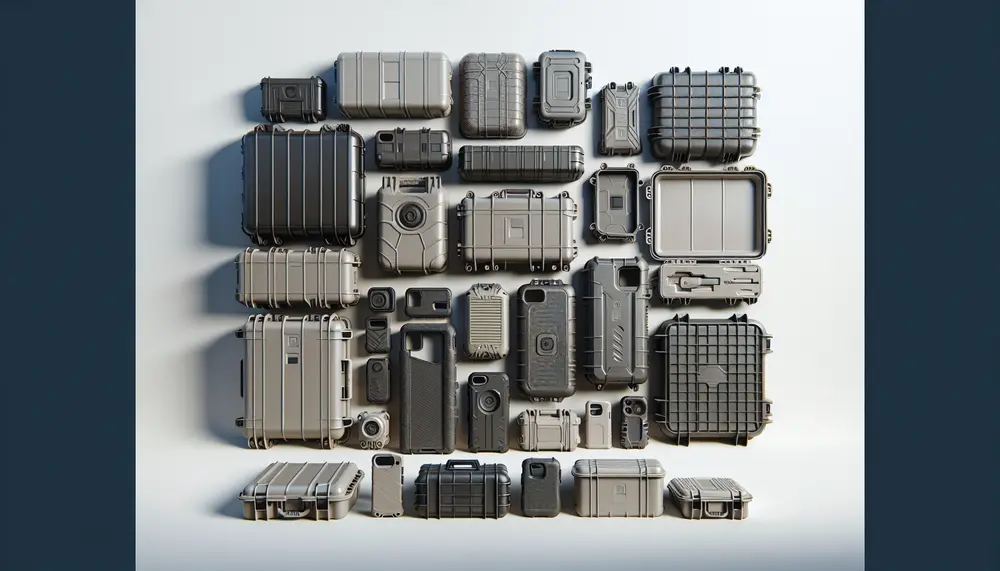Table of Contents:
Introduction to Protective Case Usage Benefits of Using Protective Cases Types of Protective Cases Protective Cases for Smartphones Protective Cases for Tablets Protective Cases for Laptops Other Devices that Benefit from Protective Cases Choosing the Right Protective Case for Your Needs Maintenance and Care of Protective Cases Conclusion
Introduction to Protective Case Usage
Protective cases are essential for safeguarding our valuable devices. From smartphones to laptops, these cases provide a layer of defense against everyday hazards. Understanding the protective case usage can help you make informed decisions about the best protection for your gadgets.
Pros and Cons of Using Protective Cases
| Aspect | Pros | Cons |
|---|---|---|
| Damage Prevention | Offers protection against drops, scratches, and impacts, preserving the integrity of the device. | Adds bulk and weight to the device, which may be undesirable for some users. |
| Extended Lifespan | Maintains the device's condition, potentially increasing its resale value and usability duration. | Quality cases can be expensive, adding to the overall cost of owning the device. |
| Enhanced Grip | Many cases provide a better grip, reducing the chances of accidental drops, especially on smooth devices. | Can feel uncomfortable or less aesthetically pleasing compared to the device's original design. |
| Camera Protection | Shields camera lenses from scratches, dust, and damage, ensuring better photo and video quality over time. | May obstruct or be incompatible with certain camera accessories or functions. |
| Stand Functionality | Some cases come with built-in stands, allowing for hands-free use and better ergonomics. | Stand mechanisms can add complexity and may break or wear out over time. |
Benefits of Using Protective Cases
Using protective cases offers several advantages:
- Damage Prevention: Protects devices from drops, scratches, and impacts.
- Extended Lifespan: Helps in maintaining the device's condition, prolonging its usability.
- Enhanced Grip: Many cases provide a better grip, reducing the chance of accidental drops.
- Camera Protection: Shields camera lenses from scratches and dust.
Types of Protective Cases
There are various types of protective cases, each designed for specific needs:
- Hard Cases: Made from rigid materials like plastic or metal, offering robust protection.
- Soft Cases: Made from silicone or rubber, providing flexibility and shock absorption.
- Wallet Cases: Combine device protection with storage for cards and cash.
- Rugged Cases: Designed for extreme conditions, offering maximum protection.
Protective Cases for Smartphones
Smartphones are prone to damage due to their frequent use. Protective cases for smartphones are designed to fit snugly and offer features like:
- Screen Protection: Raised edges to prevent screen scratches.
- Port Covers: To keep dust and debris out of charging ports.
- Shock Absorption: Materials that absorb impact from drops.
Protective Cases for Tablets
Tablets, being larger, require sturdy protection. Tablet cases often include:
- Stand Functionality: Built-in stands for hands-free use.
- Keyboard Integration: Some cases come with detachable keyboards.
- Full-Body Protection: Covers that protect both the front and back of the tablet.
Protective Cases for Laptops
Laptops are significant investments and need protection, especially during travel. Laptop cases offer:
- Padding: Extra cushioning to absorb shocks.
- Water Resistance: Materials that protect against spills and rain.
- Storage Compartments: Additional pockets for accessories.
Other Devices that Benefit from Protective Cases
Beyond smartphones, tablets, and laptops, other devices also benefit from protective cases:
- Smartwatches: Cases that protect the screen and body from scratches.
- Earbuds: Cases that prevent damage and loss.
- Gaming Consoles: Cases that offer protection during transport.
Choosing the Right Protective Case for Your Needs
Selecting the right protective case depends on several factors:
- Device Type: Ensure the case is designed for your specific device model.
- Usage Environment: Consider where and how you use your device (e.g., outdoors, travel).
- Material Preference: Choose between hard, soft, or hybrid materials based on your needs.
- Additional Features: Look for features like stands, card slots, or waterproofing.
Maintenance and Care of Protective Cases
To ensure your protective case remains effective, regular maintenance is necessary:
- Cleaning: Remove the case and clean it regularly to prevent dirt buildup.
- Inspection: Check for any wear and tear and replace the case if necessary.
- Proper Use: Follow the manufacturer's instructions for installation and removal.
Conclusion
Protective cases are a vital investment for safeguarding your devices. By understanding the different types and benefits of protective case usage, you can choose the best option for your needs. Regular maintenance ensures your case continues to provide optimal protection.
Frequently Asked Questions about Protective Cases
Why should I use a protective case for my device?
Using a protective case helps prevent damage from drops, scratches, and impacts. It can also extend the lifespan of your device by maintaining its condition, thus potentially increasing its resale value.
What types of materials are used in protective cases?
Protective cases can be made from various materials such as hard plastic, metal, silicone, rubber, or a combination of these. Each material offers different levels of protection, flexibility, and shock absorption.
Do protective cases add much bulk to the device?
While some protective cases can add bulk and weight to the device, there are many options available that are slim and lightweight, offering protection without significantly altering the device's profile.
Can a protective case interfere with device functionality?
High-quality protective cases are designed to fit precisely, maintaining access to ports, buttons, and camera lenses. However, some may affect wireless charging or signal strength, so it's essential to choose a well-designed case.
How do I choose the right protective case for my needs?
Selecting the right protective case depends on factors like your device type, usage environment, and material preference. Look for features such as impact resistance, additional storage, and water resistance to suit your specific needs.






